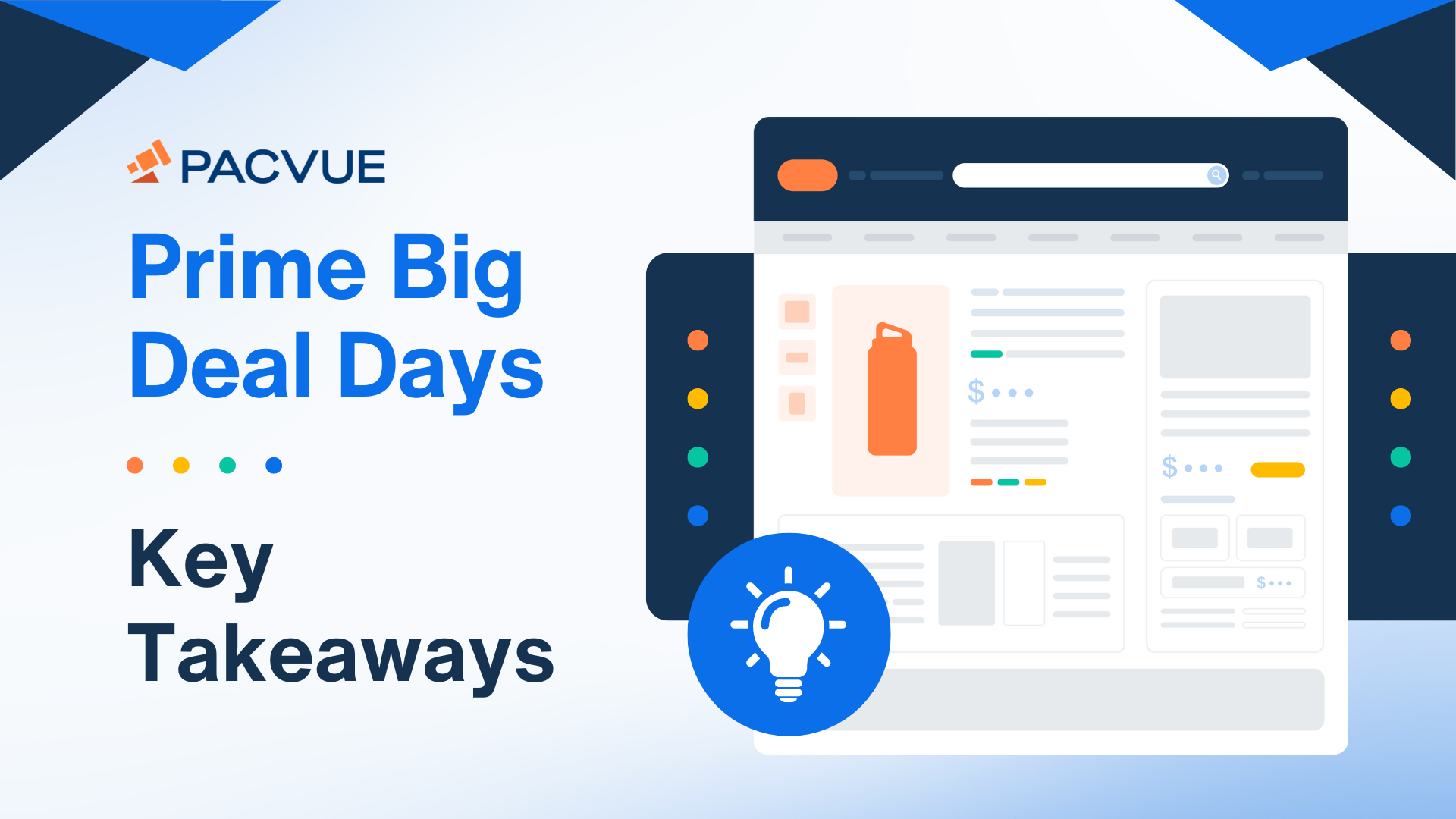Another Amazon Prime Big Deal Days (or PBDD) has come and gone. With our deep insights into sales and promotions activity across the retail media ecosystem, the Pacvue team gets a front row seat into all the details that make these tentpole events so unique.
When it comes to PBDD and the ever-increasing number of tentpole events that are driving competition to new heights, we’ve noticed that advertisers have been forced to start thinking differently about their strategies. As our teams observed, more advertisers this year have stretched out Prime Day budgets to account for higher CPCs during the deal days themselves. This means that there’s a bigger emphasis on upper funnel activities ahead of time to drive product consideration.
So what are consumers doing this year? And how has all that translated to results and performance for brands and agencies?
Here’s what we found:
1. Amazon Prime Big Deal Days is Bigger than Ever
Pacvue noted spend increases for both PBDD Day 1 and Day 2. In fact, we saw that ad spend surged 40% higher compared to last year on both days, showing that there’s still a huge opportunity during the event and brands recognize it.
2. October’s PBDD is a “Stock Up” Event, Not a “New-to-Brand” Event
Brands often leverage deal events to drive new-to-brand (NTB) customers. In the competitive retail media landscape, there’s a lot of interest in how to drive net new purchases from net new customers – and a lot of dollars invested in doing it. But what we noticed during PBDD is that the categories with the highest conversion rates were essential items (such as Health & Household), indicating that consumers have likely approached this event as a way to stock up on products they already buy.
3. Better ROI = Better Budget Automation
The brands that delivered the best results during PBDD are the teams that leveraged more automation on optimizations, bid and budget management, and other tactics like dayparting. By making budget strategies dynamic throughout the event, especially in partnership with Pacvue and real-time data activations to inform ad details, we saw a lot of those clients drive higher ROAS.
With same-day brands, we helped adjust budgets and product priorities based on forecasts and inventory data. This helped brands get better results with both search and display ads when it came to delivering impressions that helped achieve sales goals.
4. The Category Story
The team had a number of takeaways when it came to product categories. On the front lines, our teams saw an uptick in purchases focused on vitamins and grocery accounts. These purchases aren’t necessarily seasonal – instead, this is likely a result of promotional deals on items that customers had on their list already. In other words, it’s “stock up” behavior rather than “new-to-business” behavior.
When we analyzed our product category data for Sponsored Products, we saw a few stand-out trends:
Prime Day 1
- Baby Products and Pet Supplies saw the highest ad spend growth, with +103% and +98% – not surprising, considering these two categories saw the highest increase (+31%) in CPC rates as well
- Health & Household showed the highest CVR at 29%
Prime Day 2
- Office Products and Toys & Games had the highest Brand Average Daily Spend growth rates, reaching 129% and 102%
- Baby Products and Beauty & Personal Care had the highest Brand Average Daily Spend
- The CPC for Toys & Games and Pet Supplies saw the fastest growth, at 29% and 28% respectively
Overall, the hard data confirms what we saw as we worked with clients: the shoppers for PBDD are not necessarily impulse buyers. Instead, as we see with a category like Health & Household, these purchases have been on the list for a while. PBDD is when consumers decide to buy the trigger.
5. Post-Prime Big Deal Days Trends
Now that the event is over, our data quickly showed that ad spend and average CPC returned to pre-event levels directly after Prime Big Deal Days ended for both Sponsored Products and Sponsored Brands. While brands quickly ramped up spending and bids during the event, they quickly adjusted budgets and bids as soon as the event ended.
Ad spend increased 26.5% year-over-year across ad types for the event, showing a significant increase in investment for brands and sellers, also tying ad spend growth for Amazon’s July Prime Day, which increased 26.3% year-over-year.
The Dynamics of Deals
In our conversations with clients and our data analysis, Pacvue has seen advertisers start applying more advanced tactics and strategies to events like Prime Big Deal Days. The interesting trends here are all telling the story of continuous growth and innovation at the same time. We anticipate that, next year, we’ll be seeing even more budget strategies mapped out to dynamic creative and product detail pages.
And, as the growth rate normalizes, the real question will be: how do you drive new customers across other channels to make a purchase when there’s no promotional event? And how do you predict when that will happen?
Stay tuned for our updates during the holiday season to find out how the retail media landscape for Q4 continues to change and check out Pacvue’s Holiday Headquarters for your one-stop shop for winning tips & tricks this holiday season.













